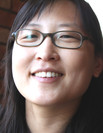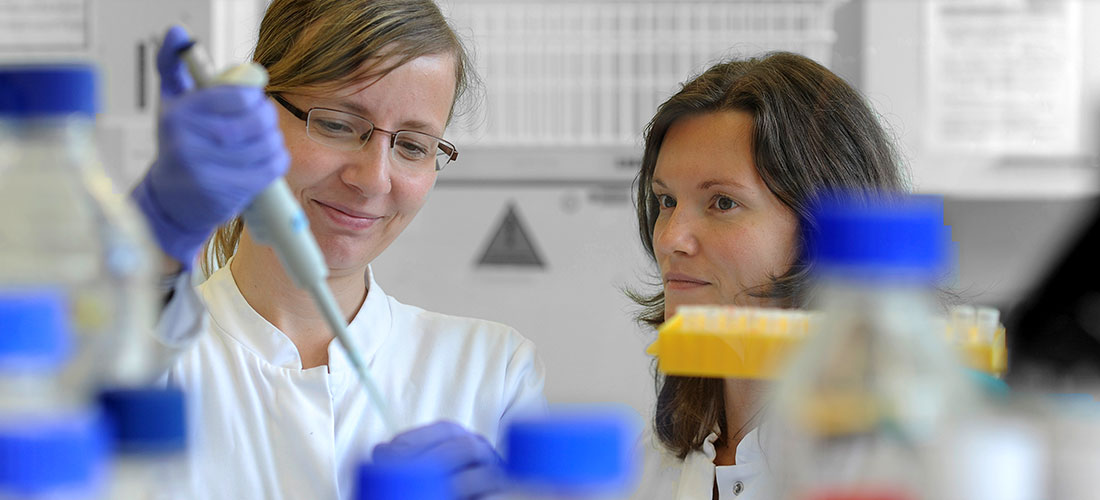Prof. Dr. rer. nat. Soyoung Lee

Molekulares Krebsforschungszentrum (MKFZ)
Charité - Universitätsmedizin Berlin
Augustenburger Platz 1
13353 Berlin
Germany
Tel: +49 30 9406 3758
E-mail: soyoung.lee(at)charite.de
University Education
- 1995-1997 B.Sc. and M.Sc., Korea Advanced Institute of Science and Technology (KAIST), Korea
- 2001 Ph.D. (=Dr. rer. nat.), State University of New York (SUNY), USA
Professional Experience (selection)
- 2002-2006 Postdoctoral research fellow, Department of Hematology, Oncology and Tumor Immunology, Charité
- 2006- Deputy principal investigator, MDC
- 11/2007 - 01/2008 Maternity leave
- 09/2009 - 11/2009 Maternity leave
Scientific Scope
My research focuses on the (de)regulation of gene expression during tumorigenesis and therapy, and conceptualizing and testing novel cancer treatment strategies. Specifically, we have been interested in cellular senescence, a profound state switch of a proliferating to a lastingly arrested cell – that has central tumor-suppressive implications when executed in pre-malignant cells as oncogene-induced senescence or in manifest tumors as therapy-induced senescence. Furthermore, cellular reprogramming and state switch beyond senescence provides opportunities to harness and clear these cells, which is directly related to the therapeutic strategies against cancer.
Most important Awards, Grants or Scientific Achievements
- 2002-2004 Postdoctoral fellowship of Deutsche José-Carreras-Leukämie Stiftung.
- 2010 Fellowship of „Lydia-Rabinowitsch-Stipendium“ from Charité- Universitätsmedizin Berlin.
- 2012 Molecular Targeted Therapy of Cancer (MTTC) Award by German Council for Training Initiative
- Since 2008 Co-PI in Sonderforschungsbereich/Transregio TRR54, “Wachstum und Überleben, Plastizität und zelluläre Interaktivität lymphatischer Neoplasien“, Teilprojekt C2 “Nicht-Zell-autonome Effekte Therapie-induzierter Seneszenz für das Lymphom-Wachstum in vivo“.
Selected References
- Braig, M., Lee, S., Loddenkemper, C., Rudolph, C., Peters, A. H., Schlegelberger, B., Stein, H., Dörken, B., Jenuwein, T., & Schmitt, C. A. (2005). Oncogene-induced senescence as an initial barrier in lymphoma development. Nature, 436(7051), 660–665.
- Schmitt, C. A., Fridman, J. S., Yang, M., Lee, S., Baranov, E., Hoffman, R. M., & Lowe, S. W. (2002). A senescence program controlled by p53 and p16INK4a contributes to the outcome of cancer therapy. Cell, 109(3), 335–346.
- Dörr, J. R., Yu, Y., Milanovic, M., Beuster, G., Zasada, C., Däbritz, J. H., Lisec, J., Lenze, D., Gerhardt, A., Schleicher, K., Kratzat, S., Purfürst, B., Walenta, S., Mueller-Klieser, W., Gräler, M., Hummel, M., Keller, U., Buck, A. K., Dörken, B., Willmitzer, L., … Schmitt, C. A. (2013). Synthetic lethal metabolic targeting of cellular senescence in cancer therapy. Nature, 501(7467), 421–425.
- Milanovic, M., Fan, D., Belenki, D., Däbritz, J., Zhao, Z., Yu, Y., Dörr, J. R., Dimitrova, L., Lenze, D., Monteiro Barbosa, I. A., Mendoza-Parra, M. A., Kanashova, T., Metzner, M., Pardon, K., Reimann, M., Trumpp, A., Dörken, B., Zuber, J., Gronemeyer, H., Hummel, M., … Schmitt, C. A. (2018). Senescence-associated reprogramming promotes cancer stemness. Nature, 553(7686), 96–100.
- Reimann, M., Lee, S., Loddenkemper, C., Dörr, J. R., Tabor, V., Aichele, P., Stein, H., Dörken, B., Jenuwein, T., & Schmitt, C. A. (2010). Tumor stroma-derived TGF-beta limits myc-driven lymphomagenesis via Suv39h1-dependent senescence. Cancer cell, 17(3), 262–272.
- Lee, S., & Schmitt, C. A. (2019). The dynamic nature of senescence in cancer. Nature cell biology, 21(1), 94–101.
- Yu, Y., Schleich, K., Yue, B., Ji, S., Lohneis, P., Kemper, K., Silvis, M. R., Qutob, N., van Rooijen, E., Werner-Klein, M., Li, L., Dhawan, D., Meierjohann, S., Reimann, M., Elkahloun, A., Treitschke, S., Dörken, B., Speck, C., Mallette, F. A., Zon, L. I., … Lee, S. (2018). Targeting the Senescence-Overriding Cooperative Activity of Structurally Unrelated H3K9 Demethylases in Melanoma. Cancer cell, 33(2), 322–336.e8.
- Du, J., Neuenschwander, M., Yu, Y., Däbritz, J. H., Neuendorff, N. R., Schleich, K., Bittner, A., Milanovic, M., Beuster, G., Radetzki, S., Specker, E., Reimann, M., Rosenbauer, F., Mathas, S., Lohneis, P., Hummel, M., Dörken, B., von Kries, J. P., Lee, S., & Schmitt, C. A. (2017). Pharmacological restoration and therapeutic targeting of the B-cell phenotype in classical Hodgkin lymphoma. Blood, 129(1), 71–81.
- Jing, H., Kase, J., Dörr, J. R., Milanovic, M., Lenze, D., Grau, M., Beuster, G., Ji, S., Reimann, M., Lenz, P., Hummel, M., Dörken, B., Lenz, G., Scheidereit, C., Schmitt, C. A., & Lee, S. (2011). Opposing roles of NF-κB in anti-cancer treatment outcome unveiled by cross-species investigations. Genes & development, 25(20), 2137–2146.



